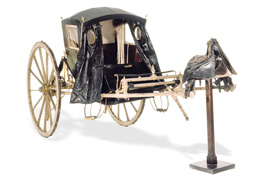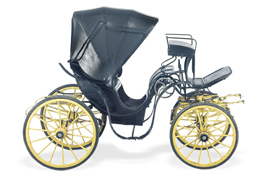
Half body, two-seat vehicle which emerged in Germany in the 17th century with the name Chaise which in Portugal became Sege. The wheels are connected by two shafts from which hang a stirrup to enter the Chaise. The body is set on two leather straps, just like the Berlin. It could be driven by a postillion, an aide to the coachman who rode on horseback next to the chaise holding the reigns. The four-wheel Chaise was also known as a “traquitana”. This type of vehicle became very popular and became a rental vehicle in and out of the cities in the 17th century and the 19th century.


